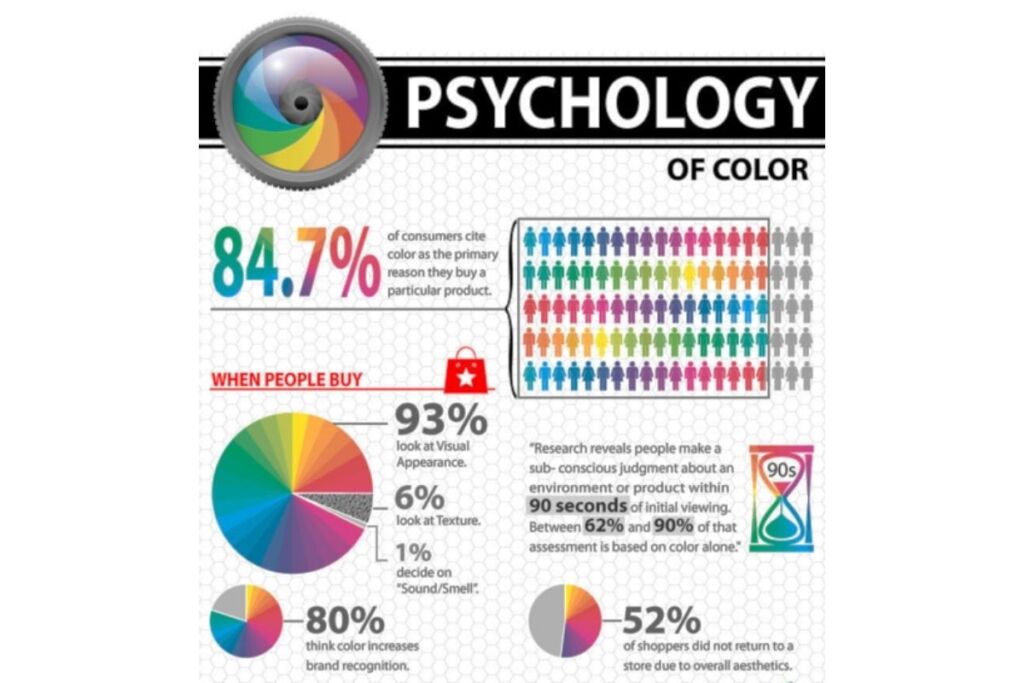March 30: No matter how much people give credit to their purchase decisions based on their strictly selective choice, independent of any condition, color of a product or a brand greatly influences consumer buying decisions. Colors have the power to evoke emotional responses in people. Not only this, colors convey the essence of a certain product or a brand. Moreover, human brain prefers the stuff that is easily seeable, understandable, and invokes positive feelings. Not only the product purchasing but also the timing of purchase is influenced by the colors that brands use to create a sense of urgency. For example, red color is associated with urgency, excitement and movement. Red is also the color that stimulates appetitive thus triggering our dopamine response. That’s why, brands use big red logos for introducing clearance sales and discounted deals in order to attract people to call to action. Impulsive buying is also triggered by red color, states an article written by daily mail.
Knowing about the color spectrum can render market practitioners better equip to make smart decisions about the visual elements of their products, brands or website logos. For example, blue color is universally accepted to be a color of peace, calmness, rational decision-making, trust and credibility. Blue is widely used in formal settings; however, it is never seen to be used where urgency and unsound decision making is required. On the other hand, red color, sharp as it is, increases heart rate, creates passion and fervor and sets the tone for urgency. The logos of McDonalds’ and coca-cola use red hues to catch attention and cause immediate decision-making. Green, the color of nature develops purity, calmness and wards off depression and stress. Marketers use this color to make customers feel at ease. Yellow grabs attention and orange creates feelings of excitement, joy and creates urgency. Tara Hornor, a creative content expert, elucidates the importance of right color combinations to invoke the feelings in targeted customers’ right according to how marketers want it. That is because customers perceive colors as associated with positive or negative traits. A combination of red, orange and yellow is said to create a warm aura that appeals more to impulse buyers. Likewise, a combination of light blue, navy and pink results into a calm and well-thought-out decision making in buyers who prefer budget friendly products. Nevertheless, if a product or a brand found unappealing or aesthetically unpleasing, the customers or traffic would diminish in no time. There are scholars like Akshat Jain, Research Scholar, Indian Institute of Technology Delhi, working on this area.
Aesthetics and color play an important role in consumer attraction to a specific brand. Poor aesthetics and color may render a brand completely unattractive for customers thus setting the tone for business success or failure. According to KISS metrics, a popular web analytic startup, 93% of consumers get affected by the color while purchasing a product. Moreover, recognition of a brand is also associated with brand color. Color psychology “affects behaviors and perceptions” states Gregory Ciotti in an article published online. It creates an impression in the minds of buyers either positive or negative. Color psychology also ensures the predictability or uncertainty of consumers’ preference of a certain brand or a product. According to a survey, 85% of consumers buy product due to its color. The importance of color can be deduced from the fact that even without a single word, colors convey messages of freshness, youth, peace, anger and other advantageous factors.
Brand needs to break through the competitive market to gain consideration and more importantly – customers. Recognition of a brand highly depends upon the color associated with a specific brand. Product color or product packaging can ignite the interest of customers. A research article The role of Package color in Consumer Purchase Consideration and Choice finds out that in retail store designs, blue color is well liked and preferable by the customers than the red one. The study also uncovers that any highly saturated color, such as red, is exciting and arousing for customers. Inevitably then, the relationship between marketing tricks and our sense of sight is so well-woven that it is the reason for great industry achievements and successes.
Although the choice and liking of a color can be highly subjective, nevertheless, certain colors can be preferred by a people of certain age groups. Older adults mostly prefer unsaturated and unstriking color combinations while younger adults prefer bright and striking shades that make them look fervor and full of energy. Likewise, females prefer bolder color while male prefer sober shades. These preferred color choices can be taken into consideration by marketers to make appropriate color schemes in order to maximize sells to potential customers. To conclude, colors influence the personality of a brand. Therefore, it is inevitable to match the colors with brands or products to portray the kind of personality or aura that marketers want, which in turn, can set their business for success.
“This article has been written by Akshat Jain, Research Scholar, Indian Institute of Technology Delhi. Scholar is a graduate from BITS Pilani and pursuing his research studies in the field of Psychology and Neuroscience.”
Profile landing page link:
https://www.instagram.com/jainakshatofficial/
https://twitter.com/writer_akshat



